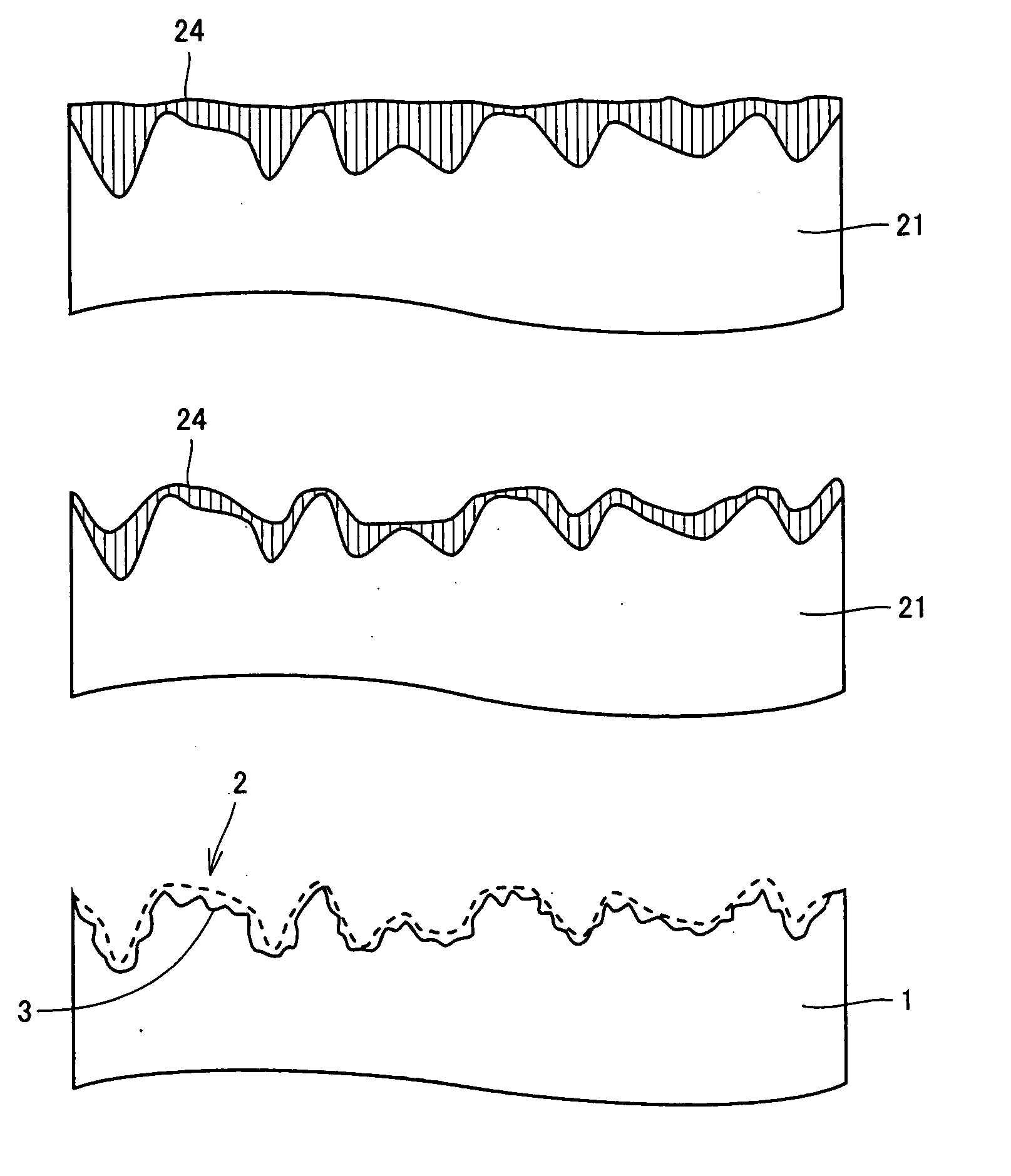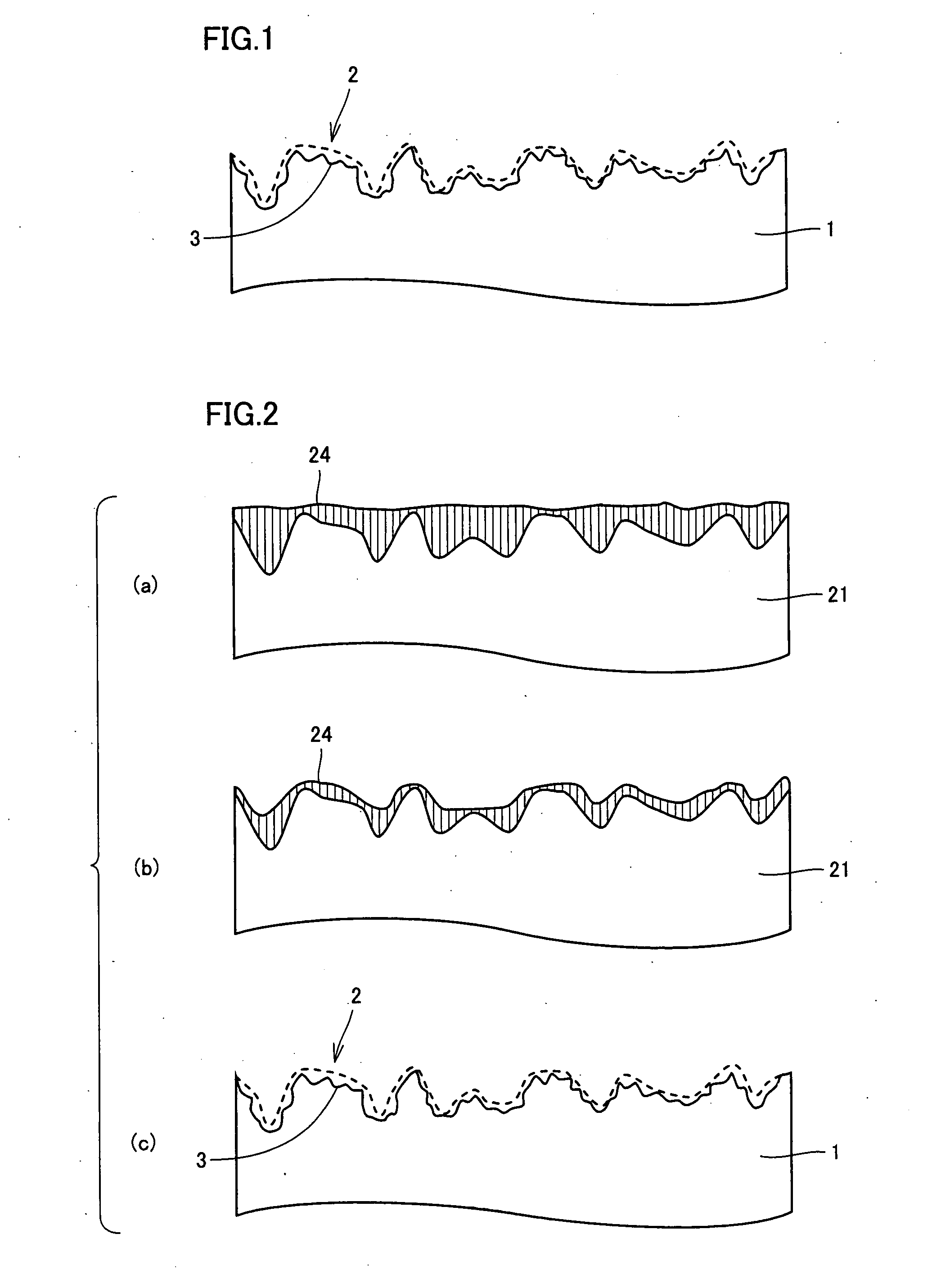Crystalline Silicon Wafer, Crystalline Silicon Solar Cell, Method of Manufacturing Crystalline Silicon Wafer, and Method of Manufacturing Crystalline Silicon Solar Cell
a technology of crystalline silicon and solar cells, which is applied in the direction of semiconductor/solid-state device manufacturing, electrical apparatus, and semiconductor devices. it can solve the problems of high probability of adverse effects on subsequent steps, damage to the slicing step surface, and high probability of impurities causing adverse effects on the subsequent steps, so as to reduce solar light reflection loss
- Summary
- Abstract
- Description
- Claims
- Application Information
AI Technical Summary
Benefits of technology
Problems solved by technology
Method used
Image
Examples
example
Example 1
[0072] Initially, a polycrystalline silicon ingot was formed by a cast method. In the cast method, a polycrystalline silicon ingot was formed by slowly cooling silicon melted in a casting mold (cast) at a temperature of approximately 1400° C. to 1500° C., which temperature is equal to or higher than a melting point of silicon, and solidifying the same.
[0073] The polycrystalline silicon ingot was removed from the casting mold, and processed with a band saw into a rectangular parallelepiped block having a square base with a side of 125 mm and a thickness of approximately 20 cm. The polycrystalline silicon ingot subjected to the block producing process as described above was sliced by means of a wire saw provided with a multiwire and abrasive grains made of SiC (silicon carbide), so that there were obtained silicon wafers each having a thickness of 300 μm. At that time, each of the abrasive grains had a grain size of not less than 10 μm and not more than 40 μm.
[0074] The si...
example 2
[0080] A crystalline silicon solar cell was fabricated with the use of the crystalline silicon wafer in Example 1. For comparison, a crystalline silicon solar cell was fabricated with the use of the crystalline silicon wafer in Comparative Example 1. At that time, these crystalline silicon wafers had a p-conductivity type, and had a specific resistance of approximately 1 Ω·cm.
[0081] Next, a diffusing agent containing phosphorus was applied to the surfaces of the crystalline silicon wafers, which surfaces were to serve as light-receptive surfaces, and the crystalline silicon wafers were heated to 900° C. to thermally diffuse phosphorus in the light-receptive surfaces of these crystalline silicon wafers, so that n-type diffusion layers having a sheet resistance value of approximately 50Ω were formed.
[0082] Next, on each of the n-type diffusion layers, there was deposited a silicon nitride film having a thickness of approximately 70 nm by a plasma CVD method, to serve as an antirefle...
PUM
| Property | Measurement | Unit |
|---|---|---|
| height | aaaaa | aaaaa |
| height | aaaaa | aaaaa |
| width | aaaaa | aaaaa |
Abstract
Description
Claims
Application Information
 Login to View More
Login to View More - R&D
- Intellectual Property
- Life Sciences
- Materials
- Tech Scout
- Unparalleled Data Quality
- Higher Quality Content
- 60% Fewer Hallucinations
Browse by: Latest US Patents, China's latest patents, Technical Efficacy Thesaurus, Application Domain, Technology Topic, Popular Technical Reports.
© 2025 PatSnap. All rights reserved.Legal|Privacy policy|Modern Slavery Act Transparency Statement|Sitemap|About US| Contact US: help@patsnap.com



